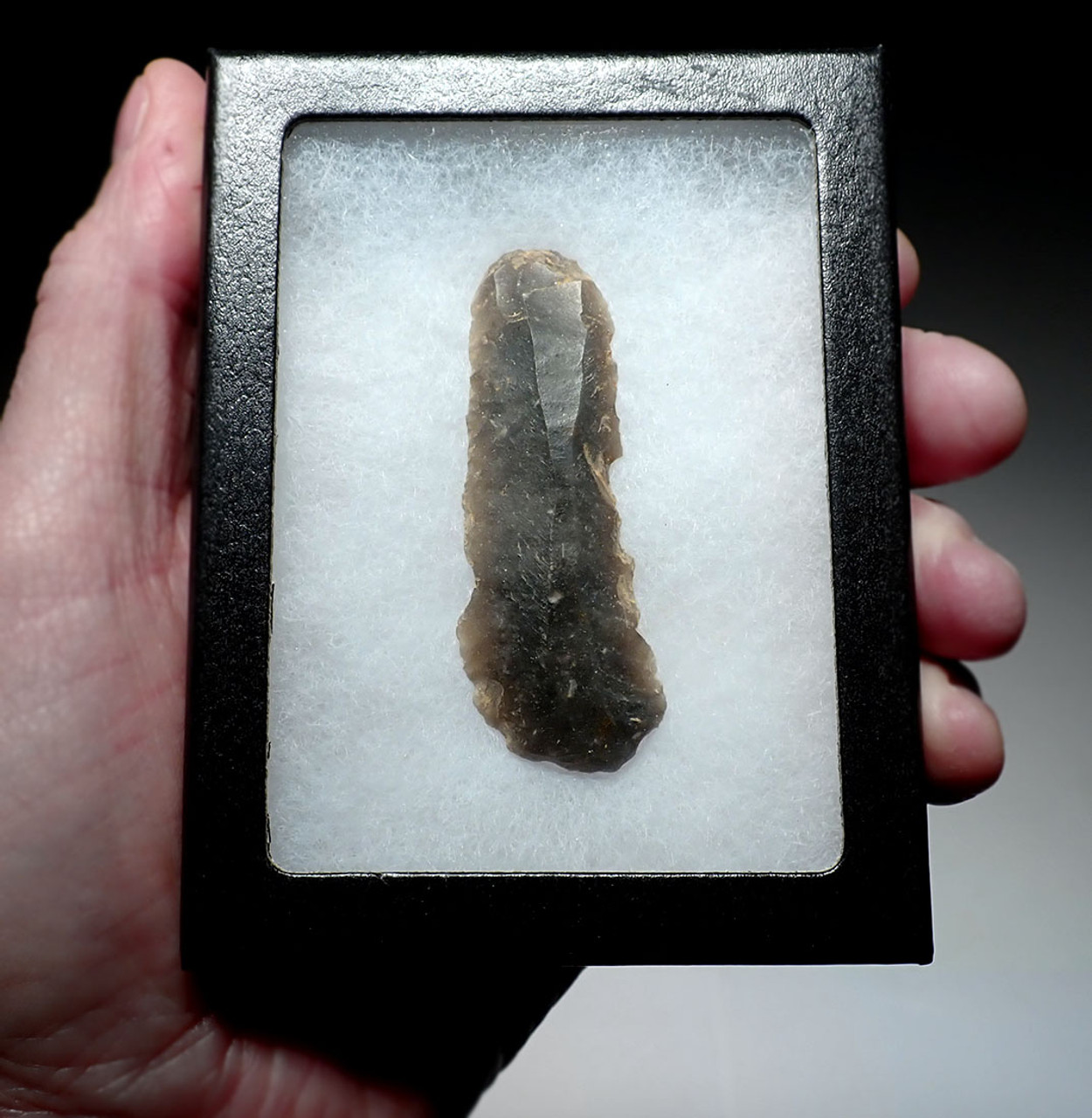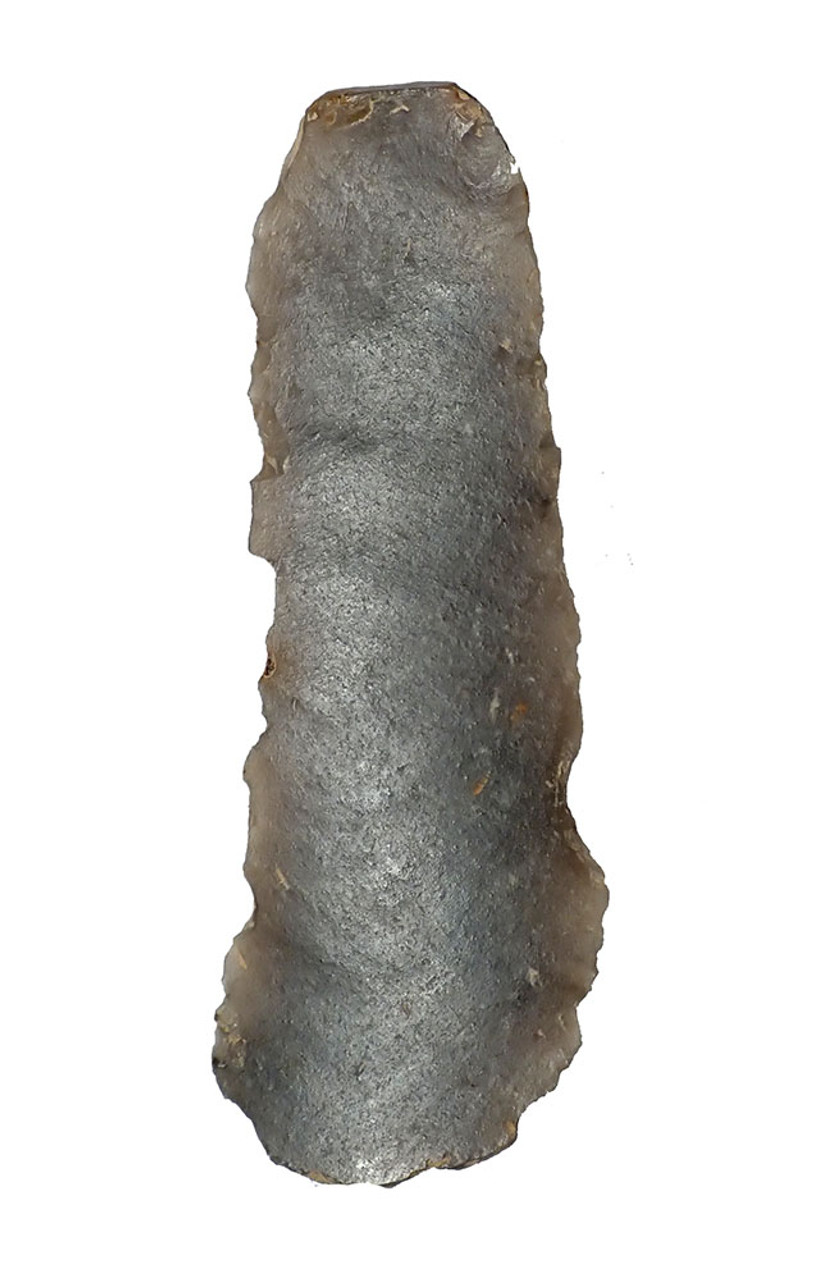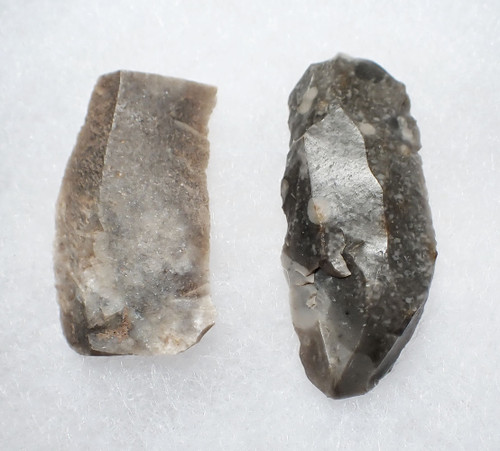Product Description
SEE MORE EUROPEAN NEOLITHIC ARTIFACTS
This British Late Neolithic flint flake tool was found on an ancient bowl barrows site in Sopley Common, England. It dates to approximately 2500 B.C., and is a genuine flint Neolithic CORE STRUCK BLADE KNIFE, showing EXTENSIVE use wear and ancient re-sharpening. The longitudinal facets on the one side show that this was a blade struck from a prepared blade core, stood up on its end. This type of core yields long prismatic blades with these features. The site this artifact was found on is classified as a 'scheduled monument', and is protected from any alteration or excavation. Collected over 50 years ago before any legislation regulated the site, this flint tool is a desirable addition to a collection that values scarce specimens such as this.
This flake flint tool is complete with naturally lustrous soil sheen. Extensive flaking and ancient resharpening on the cutting edges. Ancient sediment deposits are intact in all hinge fractures and micro-crevices of this specimen - irrefutable evidence of age and authenticity.
HISTORY
The bowl barrows at Sopley Common in England are protected as a 'scheduled monument'. In the United Kingdom, a scheduled monument is a nationally important archaeological site or historic building, given protection against unauthorized change or excavation. The protection provided to scheduled monuments is given under the Ancient Monuments and Archaeological Areas Act 1979.
A bowl barrow is a type of burial mound or tumulus. A barrow is a mound of earth used to cover a tomb. The bowl barrow gets its name from its resemblance to an upturned bowl. Bowl barrows were created from the Neolithic through to the Bronze Age in Great Britain. A bowl barrow is an approximately hemispherical mound covering one or more inhumations or cremations. Where the mound is composed entirely of stone, rather than earth, the term cairn replaces the word barrow. The mound may be simply a mass of earth or stone, or it may be structured by concentric rings of posts, low stone walls, or upright stone slabs. In addition, the mound may have a kerb of stones or wooden posts.
Barrows were usually built in isolation in various situations on plains, valleys and hill slopes, although the most popular sites were those on hilltops.
 US DOLLAR
US DOLLAR
 EURO
EURO
 AUSTRALIAN DOLLAR
AUSTRALIAN DOLLAR
 CANADIAN DOLLAR
CANADIAN DOLLAR
 POUND STERLING
POUND STERLING






















